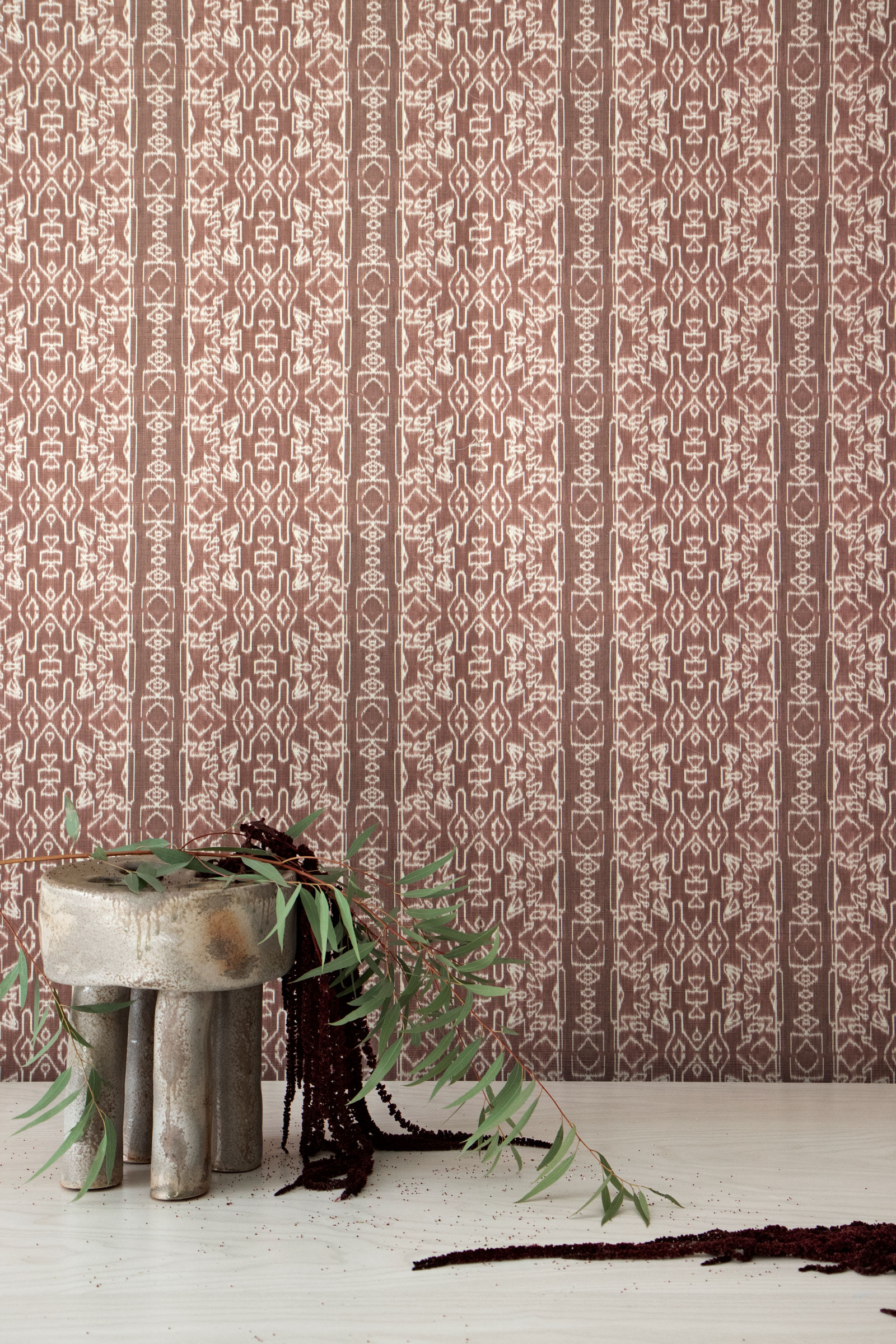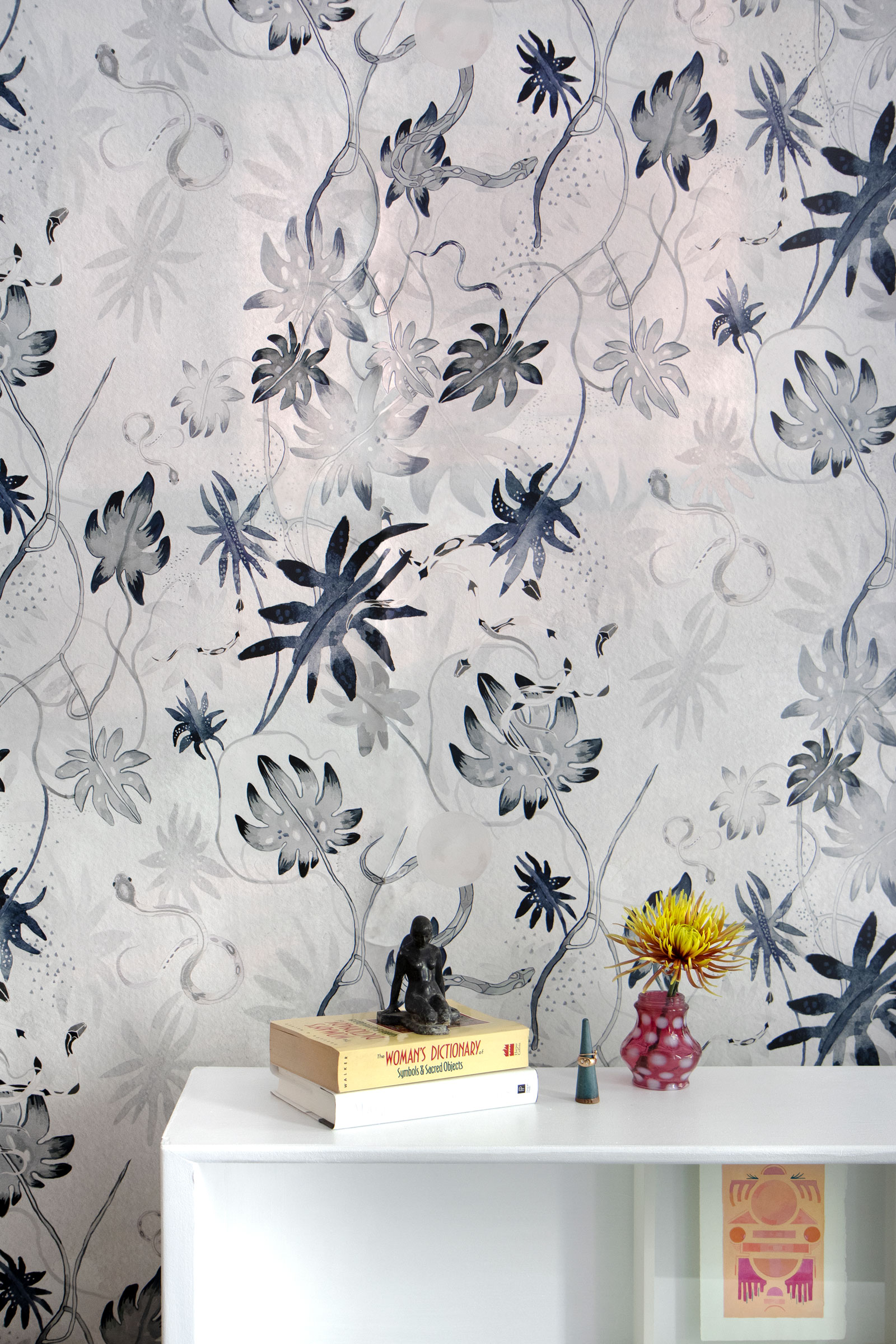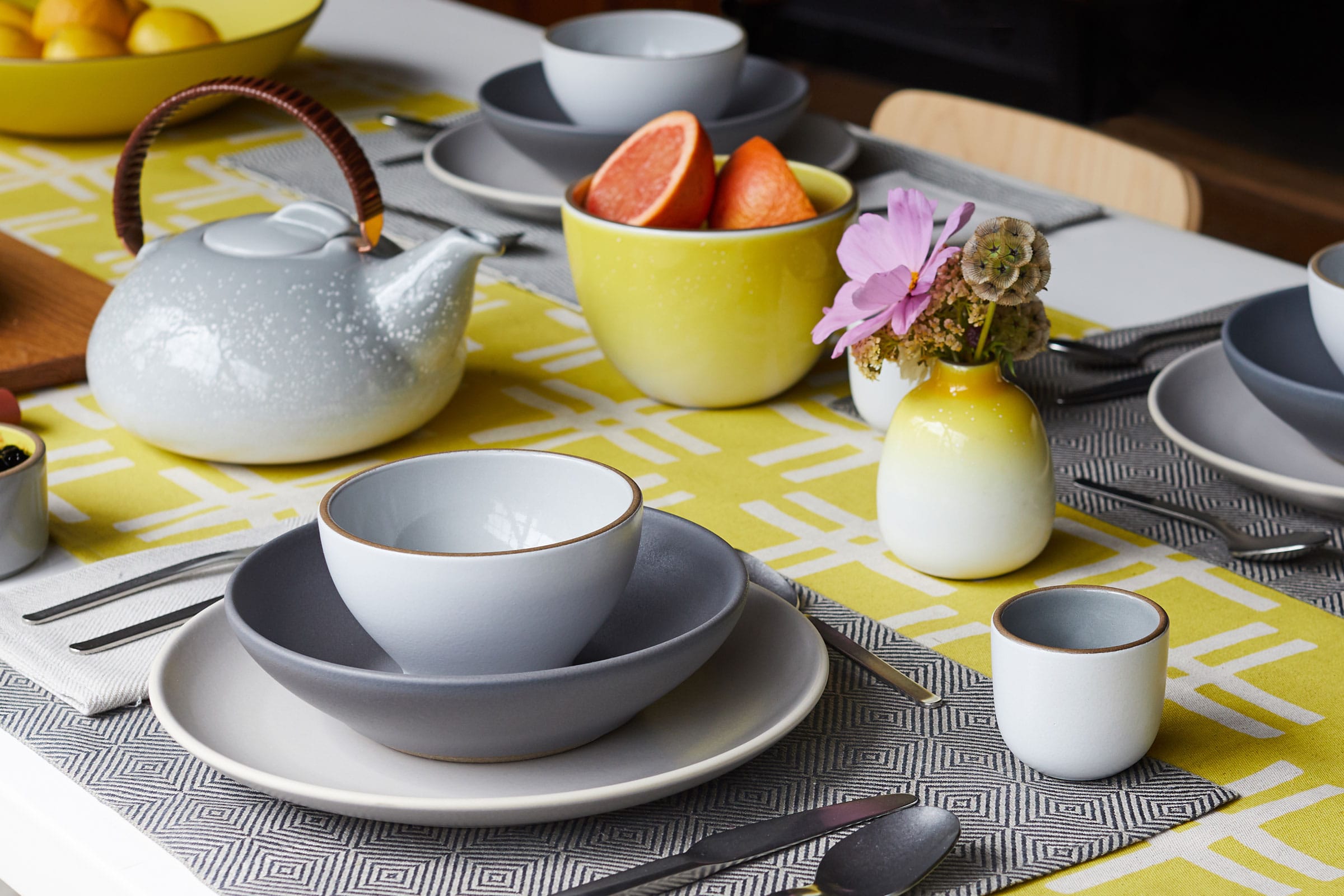Story at a glance:
- SMĪLE shelf brings sustainability to lasting modular shelving with recycled chopstick design.
- Eskayel unites artwork and sustainable decor to transform spaces with thoughtfully sourced, designed, produced wall coverings.
- Heath Ceramics makes bounds toward becoming entirely zero waste with gorgeous 2020 Winter Seasonal Collection.
1. SMĪLE by ChopValue

Courtesy of ChopValue
Historic design meets sustainability in ChopValue’s SMĪLE modular shelf, made entirely from urban harvested, recycled materials. Inspired by the 1955 string shelf designed by Nisse and Kajsa Strinning, Tobias Brox modernized the style to design SMĪLE using boards crafted from recycled chopsticks and a frame of recycled construction steel.
With expandable modularity, the shelves can be adjusted and tailored to any space. Shelves in various styles and colors work together on the frames to suit just about any wall in need of a little extra storage and flair. “It’s the adult LEGO that you’ll never get bored of,” the ChopValue team says. Plus, the compacted chopsticks are durable and strong. The shelves may be sleek and minimalist, but at a closer look the materiality of the chopsticks adds texture and character to an already interesting design.
SMĪLE’s 100% recycled, locally sourced materials mean that the shelf is not only design-savvy and durable, but also carbon negative. The shelves are manufactured in agile, local microfactories to cut down on transportation. This means each shelf stores more carbon in the recycled chopsticks and steel than it produces in material sourcing, production, and transportation combined.
SMĪLE’s successful Kickstarter campaign has the shelves on track to hit the market in Spring 2021. “It’s been very humbling to have our concept validated, with the community helping us recycle close to a million chopsticks,” ChopValue says. Starting at $65
2. Finn Plaid throw by Maison Sarah Lavoine

Courtesy of Maison Sarah Lavoine
Maison Sarah Lavoine follows up on a history of producing luxury home goods with the new After Hours collection. This selection of sustainable home products, furniture, and more embraces and widens the scope of the company’s environmental goals with eco-friendly packaging and consciously sourced materials.
Made from Italian wool and recycled cotton, the Finn Plaid throw in emerald finds its place in the After Hours collection with soft comfort and sustainability. The blanket provides literal and visual warmth with graphic lines, rich color, and apparent attention to detail in its recycled cotton threads.
Maison Sarah Lavoine works with European craftsmen to ensure the quality and sustainability of each product. The Finn Plaid throw is woven in Portugal. The blanket is packaged for shipping in organic cotton and kraft paper to minimize plastic use, taking its environmental consciousness to the next step in the material process. €195
3. Wall Coverings by Eskayel
-

- Eskayel’s wall covering in Morinda–Ikat pattern. Photo courtesy of Eskayel
-

- Eskayel’s wall covering in Edera–Ice pattern. Photo courtesy of Eskayel
Eskayel produces gorgeous patterns that reflect nature not only in aesthetic, but also in production. Each of Eskayel’s products, from fabrics to wall coverings, are sustainably sourced and produced transparently. The New York–based company’s fall collections feature updated designs inspired by natural beauty, from the frosty, bright Edera – Ice to the warm, rusty Akimbo – Morinda/Ikat.
To unite artistry and craftsmanship, Eskayel utilizes sustainably sourced wood pulp fibers, chlorine-free fibers, paper, and post-consumer recycled content among other environmentally friendly materials. Eskayel colors the papers using a water-based, low VOC ink in a print facility optimized to reduce waste production and water and electricity usage. The result is a class A fire-rated, hand-woven, chemical-free piece of art that transforms the character of any space.
The papers bring warmth, style, and fine art to any space in an entirely transparent production process that reveals the level of dedication and motivation that creating sustainable wall coverings, fabrics, furnishings, and more really requires.
The wallpapers are priced at around $800 per roll and must be ordered with a four to six week lead time to allow for the careful, sustainable manufacturing and printing process.
4. Briiv Air Filter

Photo by Mark McCarrick
This terrarium-like air filter made from natural materials performs at low voltage and purifies air equivalent to 3,043 house plants. Its name: Briiv.
Designed by Sean Sykes and James Whitfield in Leeds, Briiv is designed to make a positive impact. Briiv unites high performance and bio-circular design by bringing a sustainable vision to a product that improves people’s wellbeing.
Having seen the amount of plastic wasted in disposable air filters, Sykes and Whitfield built Briiv using four plastic-free filters that are entirely biodegradable. Every disposable element is biodegradable and toxin-free, while the unit as a whole is made from an elephant grass-based bioplastic, hemp, and glass that can be readily recycled.
The filter employs the natural micro-structures of moss, coconut, carbon, and wool to filter air naturally, efficiently, and effectively at only 5V of electricity. “Briiv is the best performing low voltage small air purifier on the market with the added advantage that there are no plastics in the filter, so it causes significantly less harm to the environment than conventional purifiers,” Whitfield says.
The filter will cost around £300 when it is available to buy widely in February 2021.
5. Heath Ceramics

Courtesy of Heath Ceramics
Heath Ceramics may be best known for its astonishing use of color, glaze, and texture to create beautiful home goods, but it also operates nearly free of waste. For the last four years, Heath has worked toward a zero waste production goal and an ultimate goal to become a closed-gap company. The 2020 Winter Seasonal Collection is the latest.
Designed by Heath’s Clay Studio director Tung Chiang and Heath co-owner and creative director Catherine Bailey in Sausalito, the new collection aims to reflect the hope, strength, pain, and humanity apparent throughout this extraordinary year. “Our inspiration comes from different places that are intended to evoke different feelings with this year’s expression capturing the feeling of a flower budding out from underneath the snow,” Bailey says.
In production, Heath reuses any waste clay before it is fired and utilizes greywater recycling to reuse water from the manufacturing process. Heath also finds other companies that are able to reuse the materials that they cannot rework into their own manufacturing.
Going forward into 2021, Heath’s focus on sustainability works with their ability to recognize and creatively work with the moment we are living in. “Even though we make a lot more dinner plates, the vision of playing and experimenting with clay and respecting the skill of creating pottery by hand is stronger than ever,” Bailey says.

